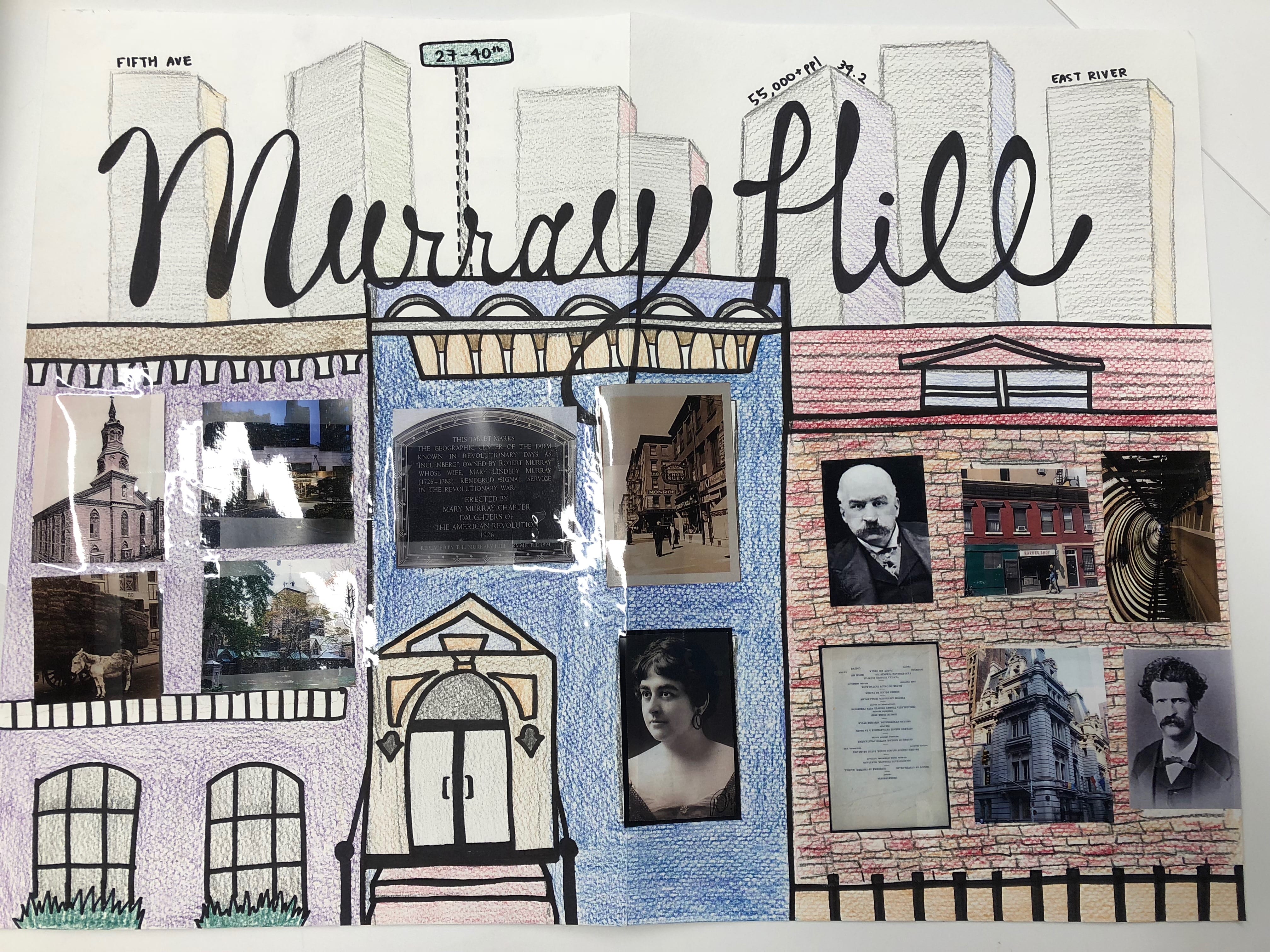For the past couple weeks, as I explored Murray Hill and studied on the neighborhood with extensive research, I learned that it was a neighborhood filled with history a. From Fifth Avenue to the East River in Manhattan, Murray Hill boasts many legends and tales throughout time that contributed to the neighborhood’s culture and community today.
To give a little history, in the 18th century, a Quaker merchant named Robert Murray came from Ireland and settled into what is now called Murray Hill. His wife Mary Murray is very significant because of her role in delaying the British soldiers in the American revolution by inviting them over for tea. There are plaques and monuments honoring Mrs. Murray all across the neighborhood. In the mid-1900’s, Murray Hill was mainly filled with the upper middle class and the wealthy due to it’s “Gilded Age” reputation. The town was brimming with famous guests such as Mark Twain and past presidents such as Grover Cleveland. In the late 20th century Murray Hill was dominantly a quiet neighborhood with wealthy older residents. Fast forward to the early 2000’s, Murray Hill has become a post-college graduate “work hard, play hard” scene with the influx of the younger generation encroaching in the once quiet neighborhood.
According to the census report from 2010-2016, out of the 8 million people in New York city, around 55,000 live in Murray Hill. The median age that was once 48 years is now 34 years. This age difference most likely has to do with the recent young professionals and new families moving in. Due to the rapid increase in the younger generation, the neighborhood has been scrambling to develop and remodel many stores and buildings to cater to these newer residents. Although Lexington Avenue and Park are still pretty serene with the older residents, Third Avenue to the East River has been experiencing some major changes. There has been new restaurants and bars to cultivate a night-life scene and there has been many high rise apartments constructed to offer housing. Although many parts of Murray Hill are changing, many of the older residents do not welcome this change. There are groups like the East Midtown Coalition for Sensible Development who have actively rejected and tried to restrain many plans.
This is where my research question comes in. In order to learn more about the culture of residents, I wanted to learn how specific stores have accepted or rejected this change and how did they stay loyal to their traditions while competing with the fast paced developments. For example, during one of my walks, I stumbled across an old barber shop. I look to the next door shops and there is a stark contrast in decoration. The empty barber shop looks very rundown and ancient compared to the shiny Starbucks bustling with customers. How do they compete? Does the shop have any plans to remodel? How are they loyal to their traditions yet pay their bills? I was inspired by this barber shop because just by looking at it filled me with a sense of familiarity and community. Although I will conduct an interview to find out more information, this barber shop seems like it is filled with history and can provide me with more information that any article online.
While researching these changes, I discovered that there is actually a Murray Hill Neighborhood Association. The president, Diane G. Bartow has live there for over 30 years. In order to blend the two generations and bridge this gap between the older and newer residents, she has set up networking opportunities and outreach programs through the association. These attempts to connect the community fuels my need to examine if they are working. Right now, the neighborhood seems divided into two sections and the shops are in the heart of it all. The older residents might like the older barber shops and older cafes because it brings them a sense of security and a permanent feeling while the younger residents prefer the Starbucks and the fast paced developments.
I chose to reflect my findings and questions through my poster. The background of the poster are hand-drawn homes that represent the many row homes you can observe by walking through Murray Hill. The found pictures posing as windows are a couple of few important events throughout history that I feel shaped Murray Hill as a neighborhood. Through my question, I plan to convey to readers the importance of tradition and hopefully my research can be applicable to not only Murray Hill but different neighborhoods all over the world. Murray Hill is a town that is filled with history and pride and whether the residents are on board with these changes or not, the neighborhood is still overflowing with culture and different influences.

